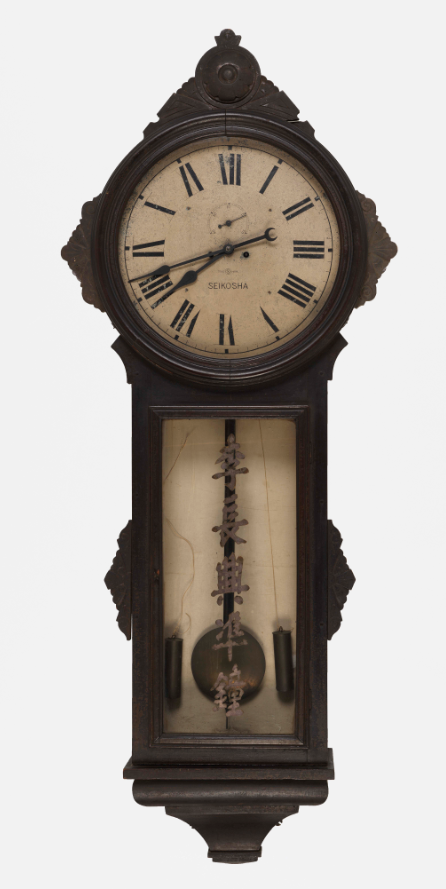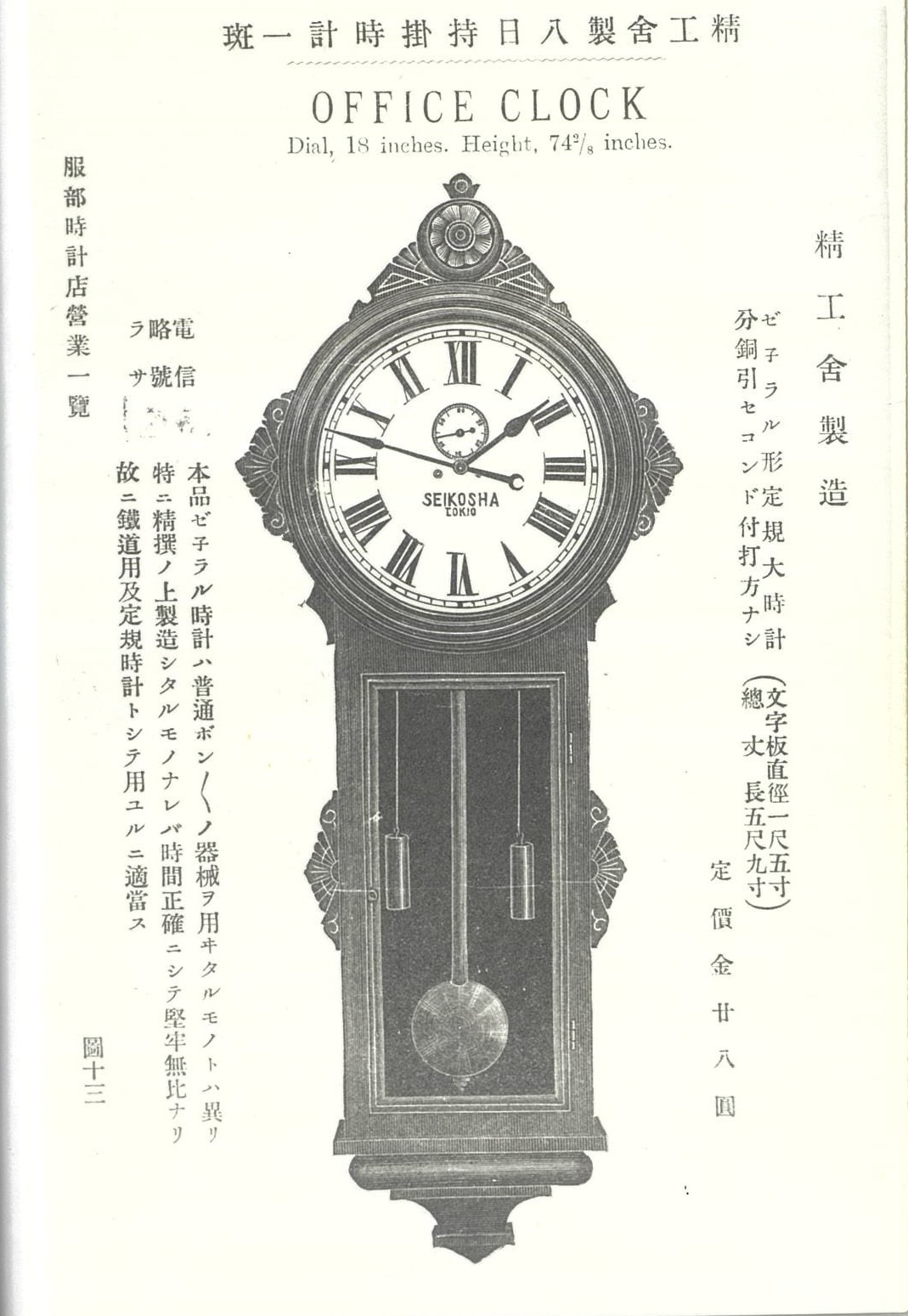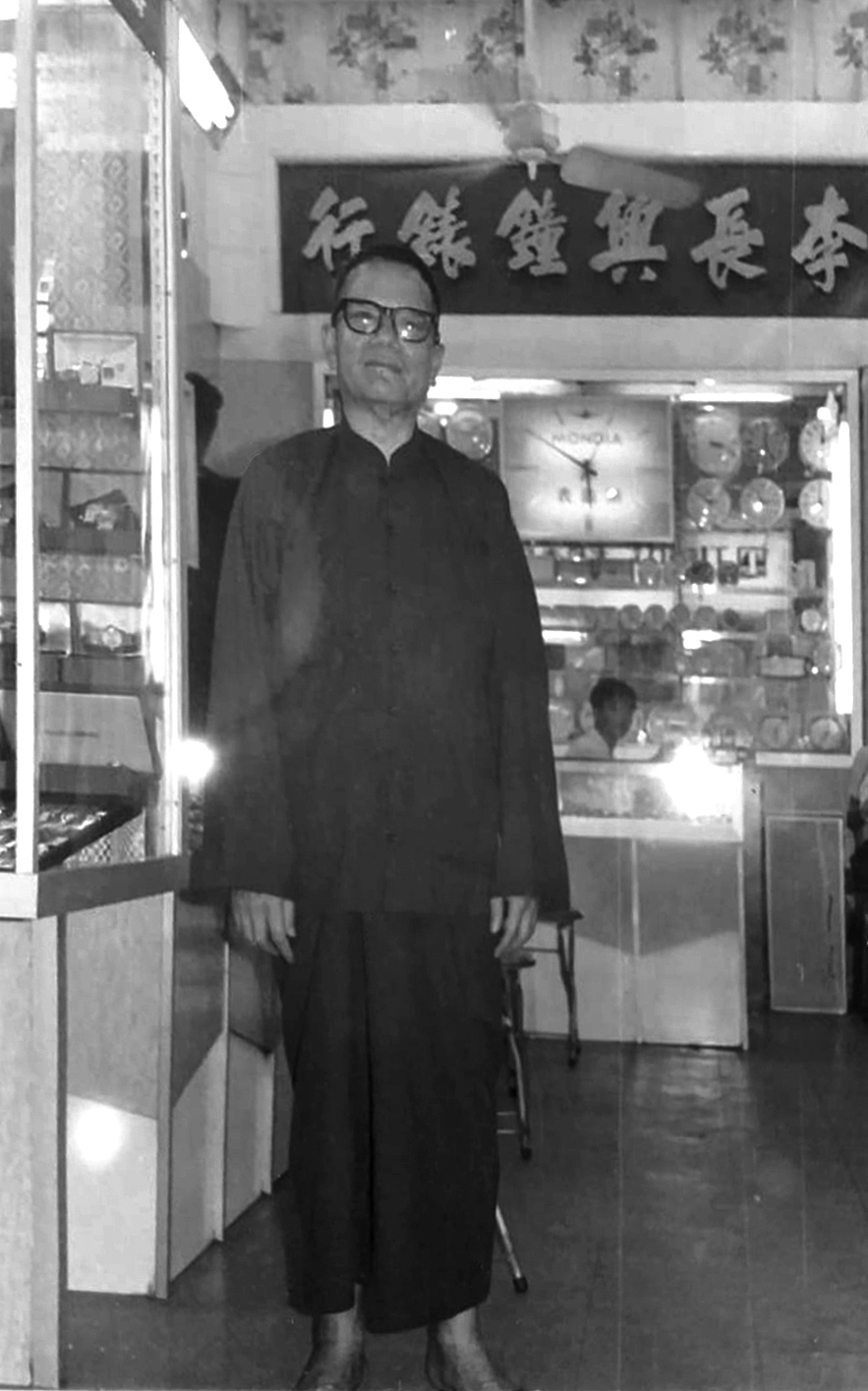The "Master Clock" of Lee Cheung Hing Watch Company
As the name suggests, the "Master Clock" in a watch shop served as a reference clock for watchmakers when making repairs and accurately setting the time for repaired and new watches and clocks. This large mechanical pendulum wall clock was made by the Japanese company Seikosha in the 1930s and was donated by the descendants of Mr. Lee Cheung-shun. The clock was bought second-hand by Mr. Lee Cheung-shun, founder of the Lee Cheung Hing Watch Company, when he opened the business. The watch company was a fixture on Shanghai Street, Kowloon, from the mid-1930s when it opened, until 2005, the year it folded. For almost 70 years, rain or shine, the master clock served the shop owner and its customers by accurately telling the time.
The pendulum wall clock has two main components – the case, which is made of solid wood, and the movement. The top and both sides of the case are decorated with three-dimensional scroll carvings of flowers and hanging leaves, ending at the bottom in an arc shape. To facilitate maintenance, the wood case opens at both the front and back. The movement comprises a white metal dial, with hand-painted roman numerals in black, and pear-shaped hands, with a crescent moon decoration at the end of the minute hand. The "small seconds" subdial is at the 12:00 position; and the hand-painted SEIKOSHA and "S" trademark are at the 6:00 position. The pendulum shaft is made of wood, with a brass pendulum disc hanging at the end. The swinging pendulum can be observed behind the glass cover. This wall clock is driven by two slowly descending weights, each of which hangs on a string. They must be raised periodically by winding the clock, and then the pendulum must be gently pushed to start the gears turning. Each rewinding enables the clock to run for eight days.
Quartz wall clocks have become widely popular, as they are much cheaper and have trendy designs. With mechanical pendulum wall clocks, in contrast, finding spare parts is a problem, and maintenance costs are very high, so they are likely to be phased out eventually.
Exhibit Highlights
 |
Seikosha 8-Day Pendulum Wall Clock / 1930s / Donated by the descendants of Mr. Lee Cheung-shun / Approximate dimensions: 72"(H) x 29"(W) x 8"(D) |






